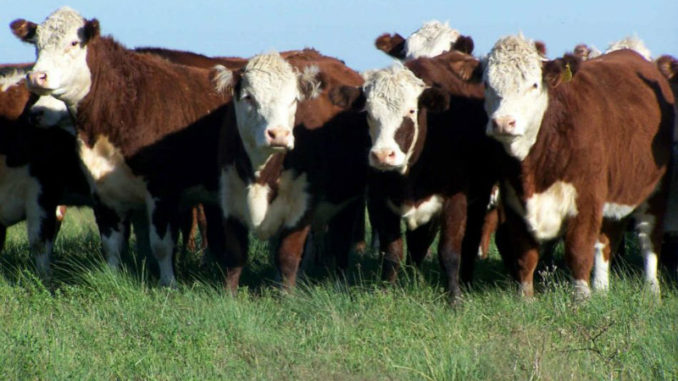
BUENOS AIRES – Argentina, which a century ago became a world power on the back of its beef exports, is poised to re-enter the top 10 shippers, helped by the end of trade curbs, and a herd rebuilding from near-50-year lows.
Argentine will in 2018 export 350,000 tons of beef, the U.S. Department of Agriculture bureau in Buenos Aires said, in their first forecast for next year’s supply and demand for the South American country.
Exports at that level would exceed by 70,000 tons volumes expected for 2017, and represent the strongest shipments since 2009 – when high slaughter rates encouraged by drought sent exports up 56% year on year to 621,000 tons.
The forecast shipments for next year would also likely exceed those for Mexico, which has been increasing exports by some 25,000-30,000 tons a year, to forecast volumes of 290,000 tons for 2017.
Overtaking Mexico would return Argentina to the top 10 of a world beef export league which it once headed, in the 1930s, as expansion in transport infrastructure and cold shipping opened up the country’s plains to profitable beef production.
The upturn reflects a recovery in the herd from the drought-spurred liquidation at the end of the last decade, which drove Argentina’s cattle herd shrink to below 48.2m head by the end of 2010, the smallest since 1964.
“Profitable [conditions] in the past years” for cow-calf operators had helped a recovery in numbers to 53.8m head at the start of this year, a number that might have been greater were it not for persistent rains in many cattle-producing areas that left “vast flooded areas”.
The herd is seen recovering nearly to 55m head by the end of 2018 as a “result of more cows being bred and excellent pasture conditions”.
In fact, herd recovery would have been bigger still were it not for an industry trend of slaughtering cattle at relatively low weights, meaning more animals must be killed to create a given volume of beef, a reflection of factors including domestic consumers taste for cuts “which are smaller, from younger cattle”.
Argentines are among the world’s most enthusiastic beef eaters on a per capita basis and, at 2.5m tons, their annual consumption is the key demand driver for the market.
However, beef exports are seen increasing their, relative, weight thanks to, besides herd rebuilding, the opening up of the US market – closed to Argentina since 2001, thanks to a foot and mouth outbreak – and expansion of exports to China to include chilled and bone-in beef.
“Traders estimate that by the end of 2017 or early 2018 [Argentina] should be eligible to supply higher-priced, chilled beef for restaurants, supermarkets and hotels,” in China, the U.S.D.A. bureau said, flagging that exporters are “enthusiastic” about prospects for Chinese and U.S. markets.
The improving prospects for Argentina’s beef industry, which is also being helped by the scrapping of an export tax, come at a welcome time for Minerva, the Brazilian meat group, which in August fulfilled long-held ambitions for South American expansion with a U.S.$300m purchase from rival JBS.
The deal included a plant in Argentina that the USDA bureau termed “one of the largest and more modern in the country”, also bringing facilities in Paraguay and Uruguay.–MercoPress



